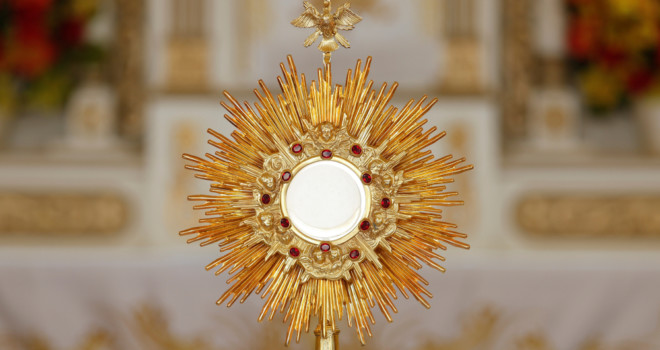This year, I am assigned to work in the sacristy, wherein we look after everything that is used in the liturgy. We do everything from setting up for Mass, to cleaning objects that I never knew the name of before (like a situla), to replacing many of the candles we use throughout the priory. It is an interesting job; being closely involved with the liturgy is at times demanding, but very rewarding.
One thing that surprised me is the particular care we must take in handling all the sacred vessels and blessed objects with which we work. They have to be treated with a certain respect. For example, we melt down blessed candles before disposing of them, the same way that you would burn an American flag to dispose of it. When we clean vessels that hold holy water, we have to pour the holy water down the sacrarium, which drains directly into the ground instead of into the sewage system. Then we clean them out with regular water, which goes down the regular sink. It sounds fairly simple at first, but I often find myself pausing to make sure that I am pouring the right water down the right sink. At times, it reminds one of the convoluted cleanliness rituals described in the book of Leviticus. Most importantly, any water that is used to purify the holy vessels which hold the Eucharist has to be consumed, because the crumbs of the Eucharist that may be in the water are the body of Christ.
Such care is taken with holy objects for good reason. The Church teaches a sacramental understanding of reality. Visible things point us to the invisible Creator. Sacramentals (blessed objects such as Rosaries, liturgical candles, etc.) and Sacraments (such as the Eucharist) point us to God in a very special way. Our understanding of reality informs the way that we treat blessed objects. We understand them not merely as useful or spiritually stimulating objects, but objects worthy of respect because they have a real and special relationship to God. For example, our Dominican prayer for the blessing of water includes a petition that the water “become an agent of divine grace.” The water in a mysterious way becomes an agent for our salvation. This sacramental view of reality reaches an apex in the teaching of transubstantiation. At the Mass, the bread and wine become substantially the body and blood of Christ, though under the appearance of bread and wine.
We cannot forget that, just as our sacramental understanding of reality informs the way we treat holy things, so also the way that we treat holy things informs our understanding of the sacramental order. By our reverence, we pass down this unique perception of God’s presence in the world to those who witness our reverence. This is a vitally important witness in a rationalistic world that often ignores the divine presence and fails to see how matter can point to anything beyond itself.
When I was quite young, it was the witness of others that first communicated to me the sacramentality of creation. One day, during the liturgy, some crumbs from the Eucharist had fallen to the ground without being noticed immediately. After Mass, I was quite surprised to see my mother picking up and consuming the crumbs off the floor where the Eucharist was distributed. As a child, I never had much of a problem with floors, but I was sufficiently perspicacious at the time to know that adults usually considered the floor an ill-suited surface from which to eat. I asked my father why my mother was suddenly flouting the usual adult-ish protocols. He explained to me that the Eucharist was the body of Jesus, and even the crumbs that fell had to be treated as such.
I am not a very attentive sort. If an earthquake occurred while I was solving a math problem, I might not notice. As a child, I was not exactly a model of attentiveness to the proceedings of the liturgy. So much happened in that Church, and I never had a clue. But almost twenty years later, I still remember my mother’s reverence for the Eucharist, and it is a reverence I maintain wherever I am, be it the sacristy, the chapel, or out in the world.
✠
Editor’s note: This article originally appeared on Dominicana, the Dominican student blog of the Province of St. Joseph.












